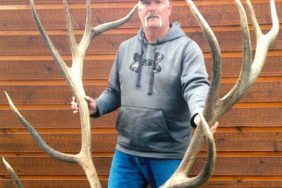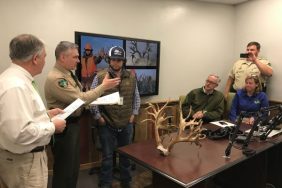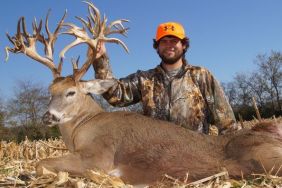 Mule Deer are one of the most deceptive animals when it comes to accurately trying to judge their antler score while on the hoof. At first glance, all Mule Deer look larger than they really are, so you will need to know a few basics to snap-judge a Muley’s rack.
Mule Deer are one of the most deceptive animals when it comes to accurately trying to judge their antler score while on the hoof. At first glance, all Mule Deer look larger than they really are, so you will need to know a few basics to snap-judge a Muley’s rack.
One of the first signifiers of an older buck is antler mass. When you see a heavy buck, you know it. Antler mass is a great place to start when it comes to picking out a possible trophy if he is among other bucks with less mass. However, recognizing mass does not qualify a buck for the record books. You will need to come up with length and symmetry to make that happen, and it takes a lot of practice to recognize both of those in just a few seconds.
Before you get to looking for length and symmetry, you will need to understand how insignificant width is. For a lot of Mule Deer hunters, a buck with a 30” spread is considered the ultimate trophy standard. Although a 30” buck is definitely a great specimen, spread has little to do with trophy quality. As a taxidermist for over 20 years, I have seen and measured a lot of Muleys. I have seen 200” deer with only a 14” spread. I have also seen a 40” wide forked horn. Width is a pretty thing to look at it, but when it comes to scoring, it is way down on the list of desirable antler traits.
The first thing to look at on a rack is the main beams. Are they long? You will need to learn how to use a Muley’s ears as a ruler to help you measure the rack in your mind. Contact a taxidermist in the area you plan to hunt for his advice and ask him what the average length of an ear is. I have mounted Muleys from all over the country, and bucks from Utah and Southwestern Wyoming had the longest ears of all the Mule Deer. Oregon is deemed to have the shortest ears, so do your homework to help you decide.
The next target for judging is the second tine, more commonly known as the back fork. You want to see a lot of length back there on that G-2, and you want to see nice long forks that are even on both sides of the rack. After that, look at the front forks. Hopefully your target animal will have nice even front forks with a lot of length. Eye guards are nice, but only if symmetrical and longer than one inch. This insures that they add to the score and won’t cause deductions.
This is just a general outline of what you will need to make sure a Mule Deer is a shooter, but for more detailed info, go to the Boone & Crockett website, download a score sheet and study it.








